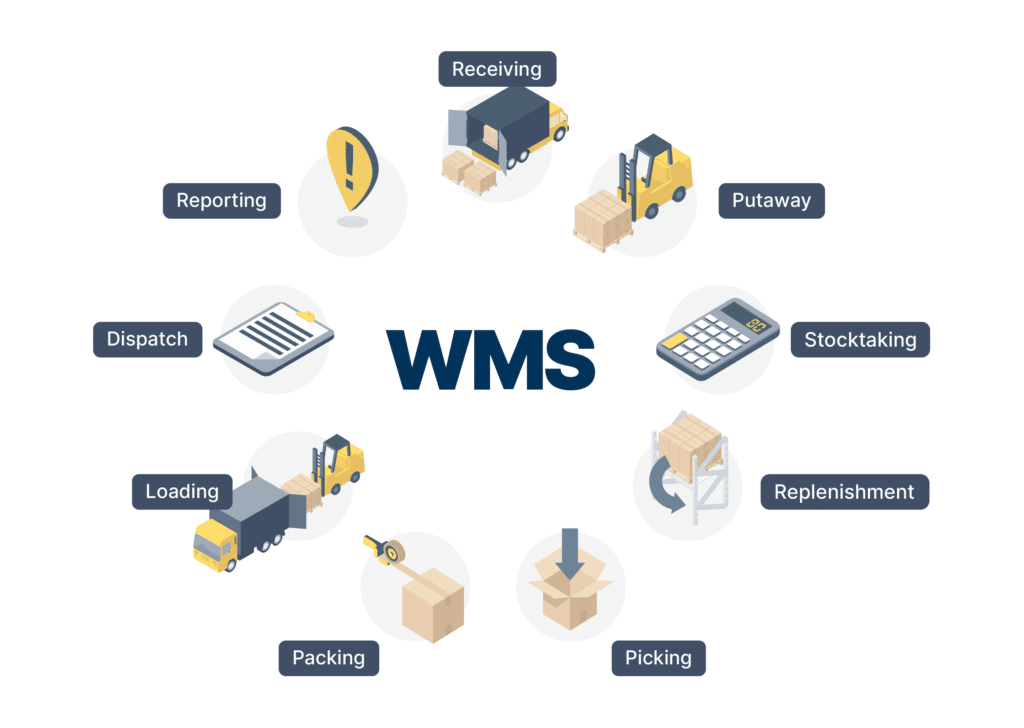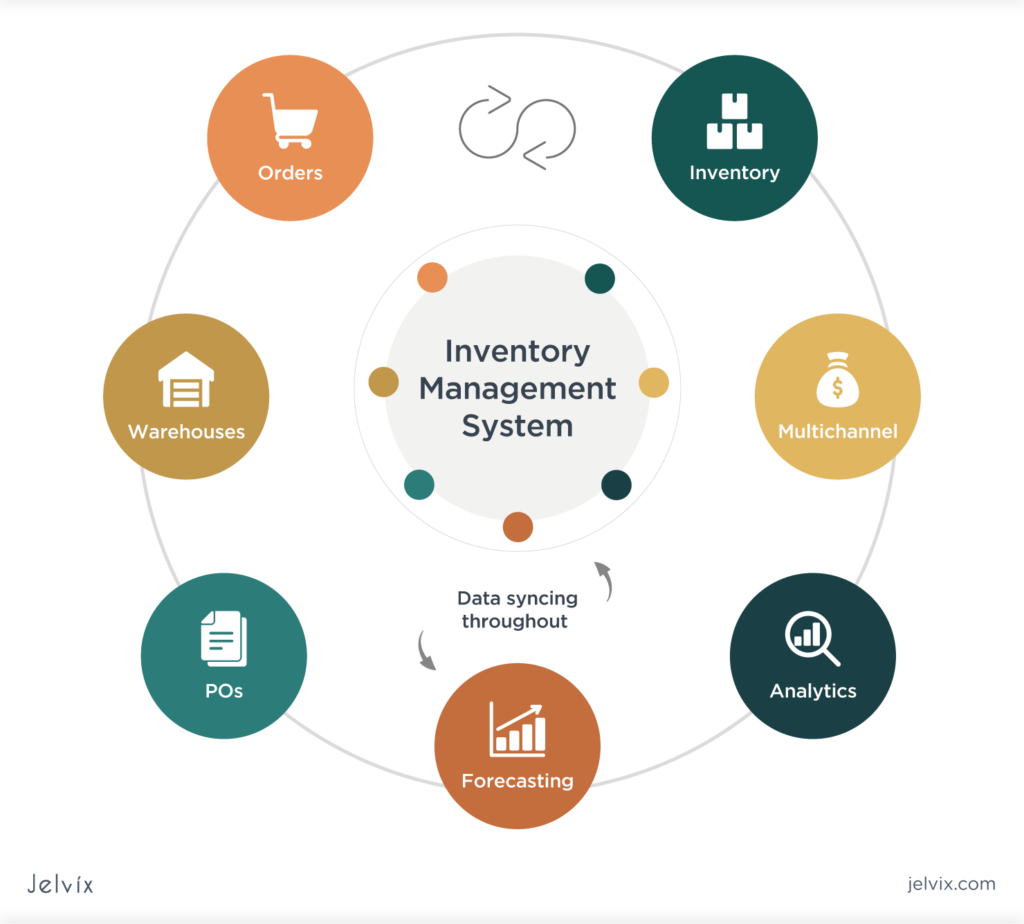Warehouse Management Systems (WMS) and Inventory Management Systems (IMS) are crucial players in optimizing how businesses handle products. These tools aren’t just buzzwords; they serve distinct roles that can make or break supply chain efficiency. So, what’s the difference? A WMS focuses on the internal movement and storage of goods within a warehouse. It helps with picking, packing, and shipping products. On the other hand, an IMS tracks stock levels, orders, and deliveries across various locations. Understanding these systems can save time and boost productivity by streamlining operations.
For businesses eager to sharpen their competitive edge, grasping the nuances between WMS and IMS is essential. Whether you’re managing a small e-commerce startup or a large retail chain, the choice between the two impacts logistics and overall performance. Let’s explore these systems further to see how they can transform your business operations.
Understanding Warehouse Management Systems
When it comes to managing the chaos of logistics, a Warehouse Management System, or WMS, can be a game-changer. Imagine trying to direct traffic without signs—it’s all about organization and efficiency. A WMS is a software tool that helps businesses streamline operations within a warehouse. Think of it as the brain behind the brawn, ensuring everything runs like a well-oiled machine. It covers everything from tracking inventory to fulfilling orders and managing the workforce. But what exactly does a WMS do? Let’s dive in and see.
Key Features of Warehouse Management Systems
A Warehouse Management System offers a variety of features designed to make warehouse operations smoother and more efficient. Here are some of the key ones:
- Inventory Tracking: Ever wondered how stores know exactly how much of each item they have in stock? A WMS keeps a real-time count of inventory, reducing overstock and stockouts. This feature helps in maintaining the right balance of goods so you’re not caught off guard.
- Order Fulfillment: Getting products from point A to point B without a hitch is crucial. A WMS optimizes how orders are picked, packed, and shipped. It ensures speedy and accurate delivery to customers, like a GPS guiding every move.
- Labor Management: Managing a team isn’t easy. A WMS tracks productivity and assigns tasks efficiently. It’s like having a personal coach for each employee, ensuring tasks are completed on time and workloads are balanced.
Benefits of Implementing a WMS
With so many features, you might be wondering, “What’s in it for me?” The benefits of using a WMS can be substantial. Here’s how it can make a difference:
- Increased Efficiency: With automated processes, a WMS reduces the time spent on manual tasks. It’s like having a superpower that speeds up your workflow without breaking a sweat.
- Reduced Errors: Manual work can lead to mistakes—a wrong shipment, a missing item. A WMS lowers those risks, acting as a safety net that catches errors before they happen.
- Improved Customer Satisfaction: Happy customers are repeat customers. By ensuring accurate orders and timely deliveries, your customer’s experience improves. Think of a WMS as your secret weapon in the battle for customer loyalty.
Incorporating a WMS into your operations isn’t just about adopting new technology; it’s about pushing your business forward. It’s like upgrading from a horse-drawn carriage to a high-speed train. The right WMS can transform the way you operate, ensuring not just survival in the marketplace but also thriving and growing.
Understanding Inventory Management Systems
Inventory Management Systems (IMS) play a vital role in keeping a business running smoothly. Think of an IMS as the brain behind managing your physical products—it’s like having a personal inventory assistant that helps track stock levels, manage orders, and ensure that products flow efficiently in and out of your warehouse. But what makes these systems so critical? Let’s dive into their key features and benefits.
Key Features of Inventory Management Systems
When you’re choosing an IMS, understanding what it does is key. Here are some of the standout features:
- Stock Tracking: This is all about knowing what you have and where it is. An IMS keeps tabs on how much of each item is in stock, making it easier to avoid surprises like running out of popular products.
- Order Management: Think of this feature as your personal manager for incoming and outgoing orders. It organizes and streamlines customer orders, ensuring they are processed efficiently and accurately, which keeps customers happy.
- Reporting: Imagine getting a report card for your business. That’s what this feature does. It provides insights into sales trends, inventory levels, and other key metrics—information that helps you make smarter business decisions.
Together, these features create a robust system that acts as the backbone for managing inventory effectively.
Benefits of Using an IMS
Using an IMS isn’t just about keeping track of things—it’s a smart choice that brings several advantages:
- Better Forecasting: With an IMS, predicting future demand becomes easier. It’s like having a crystal ball that uses data to help forecast what customers will want, allowing businesses to plan accordingly.
- Cost Reduction: By optimizing stock levels and minimizing overstock or stockouts, an IMS helps cut costs. Fewer unnecessary purchases mean more money saved—it’s like having a budget-savvy friend always keeping tabs on your spending.
- Improved Decision-Making: With real-time data at your fingertips, making business decisions becomes a breeze. Whether it’s deciding when to reorder a product or setting sales goals, an IMS provides the insights needed to make informed choices.
By leveraging these benefits, businesses can not only save money but also enhance their overall efficiency and customer satisfaction. So, next time you think about inventory, remember how an IMS could be your secret weapon in managing it all.
Comparing WMS and IMS
When it comes to managing a warehouse, businesses often weigh the pros and cons of a Warehouse Management System (WMS) versus an Inventory Management System (IMS). Although these systems might seem similar at first glance, they serve very different purposes and bring unique benefits to the table. So how does one decide which system best fits their needs?
Functionality Differences
The primary distinction between WMS and IMS lies in their core functions. Simply put, a WMS is like the stage director of a warehouse, orchestrating everything from receiving and putting away inventory to picking and shipping orders. Its focus is on optimizing warehouse operations, ensuring smooth workflows, and making use of every inch of storage space. On the other hand, think of IMS as the journal keeper, maintaining a record of inventory levels. Its main job is to track the quantities of goods you have, their locations, and even when you need to reorder.
- WMS Features:
- Coordinates warehouse tasks
- Optimizes storage space
- Improves picking and packing efficiency
- IMS Features:
- Tracks stock levels
- Monitors reordering needs
- Records inventory locations
Each system has a distinct role, and your business needs determine which one you might prioritize.
Integration with Other Systems
Integration is crucial for both WMS and IMS, especially when your business relies on an Enterprise Resource Planning (ERP) or a supply chain management system. If you imagine your business as a living organism, then these integrations are like vital connections between organs, ensuring everything works in harmony.
WMS and IMS can seamlessly interface with ERP systems to sync inventory data with other business processes such as accounting, order management, and customer service. This connectivity provides a holistic view of operations, helping businesses run efficiently.
- WMS Integration:
- Connects warehouse tasks with supply chain systems
- Enhances real-time order processing
- IMS Integration:
- Updates stock levels in ERP
- Ensures accurate financial and sales reporting
The choice between WMS and IMS can hinge on how well each system integrates with your existing technology stack.
Scalability and Complexity
As businesses grow, so do their operational needs. This is where the differences in scalability and complexity become apparent. A WMS usually offers more sophisticated solutions, but with that comes added complexity. It’s like upgrading from a bicycle to a car; while the car offers more speed and storage, it also requires more know-how to manage.
WMS implementations can be more complex, often demanding significant time and resources to set up and maintain. But, if your business scales up rapidly, its advanced features can offer substantial payoffs. Meanwhile, IMS solutions are generally simpler and more straightforward, making them easier for small to medium enterprises to adopt.
- WMS Scalability:
- Supports large-scale operations
- Accommodates complex workflows
- IMS Simplicity:
- Ideal for smaller scale businesses
- Easier to implement and manage
Choosing between WMS and IMS might come down to how expansive and complex your warehouse operations are. Are you ready for the added complexity, or do you need a simple system that grows gradually with you?
Each of these systems presents a unique approach to warehouse and inventory management. Understanding these differences can guide you in selecting the right solution for your business needs.
Choosing the Right System for Your Business
Selecting the right system for handling inventory and warehouse operations is crucial for business success. Let’s break down some key aspects to help guide your decision-making process.
Assessing Business Needs
Before diving into the details of Warehouse Management Systems (WMS) and Inventory Management Systems (IMS), take a moment to reflect on your business needs. Are you looking to streamline shipping, or is tracking product levels your main concern? Each system offers unique features designed to tackle different challenges.
Consider the following:
- Scale of Operations: Do you manage a small inventory, or are you operating multiple warehouses?
- Complexity of Tasks: Are you handling simple stock management, or do you need intricate logistics processes?
- Integration Needs: How important is it for your system to integrate with other solutions like accounting software?
- Regulatory Requirements: Are there specific industry standards you must comply with?
By answering these questions, you’ll gain a clearer picture of which system aligns best with your goals and challenges.
Cost Considerations
Cost is often a major factor in choosing the right system. Both WMS and IMS come with financial implications you can’t ignore. Here, let’s explore how to factor in budget and return on investment (ROI).
- Initial Costs: Look beyond the sticker price. Consider setup fees, hardware requirements, and potential training costs.
- Operational Costs: Ongoing expenses can add up. Evaluate subscription fees, maintenance charges, and tech support.
- Potential ROI: What impact could enhanced efficiency and reduced errors have on your bottom line? A higher initial cost could pay off in savings down the road.
The right system could help manage your budget efficiently. When you weigh these factors, you can make a more informed decision that supports growth while keeping costs in check.
Case Studies and Real-World Applications
When deciding between a Warehouse Management System (WMS) and an Inventory Management System (IMS), it helps to look at real companies who’ve made the switch. These systems can transform a business, making operations smoother and more efficient. Let’s explore some success stories to see how these systems have made a significant impact.
Success Stories of WMS Implementation
Imagine a warehouse as a busy beehive where everything has to work in harmony. One wrong move could disrupt the flow. That’s where a WMS steps in. Here are a few inspiring examples:
- Amazon: This tech giant is a powerhouse of logistics. Amazon uses a highly advanced WMS to coordinate their vast network of warehouses. The system improves the picking process, ensures accuracy, and speeds up delivery. It’s like having a super-smart traffic cop directing packages to their destination without delay.
- Coca-Cola: Efficiency is key when you’re one of the largest beverage companies in the world. Coca-Cola implemented a WMS to streamline operations and reduce bottlenecks in their supply chain. The result? Faster order fulfillment and reduced costs. Now they handle inventory like a well-oiled machine.
- Adidas: In the fast-paced world of sportswear, being quick matters. Adidas adopted a WMS for better visibility and control over inventory. With real-time data at their fingertips, they manage stock levels across multiple locations with ease, ensuring that those sneakers you love are always available.
These companies have harnessed the power of WMS to supercharge their warehouse operations, proving that the right system can set you up for success.
Success Stories of IMS Implementation
While a WMS takes charge of the flow, an Inventory Management System keeps track of the hive’s treasure – the stock. Let’s see how IMS has worked wonders for some well-known businesses:
- Zara: Known for its trendy clothing, Zara needs to manage a fast-moving inventory. By implementing an IMS, they maintain a perfect balance of stock, reducing overstock and understock situations. This system acts like the brand’s own crystal ball, predicting the right amount of inventory needed.
- The Home Depot: With a wide variety of products, The Home Depot uses IMS to keep everything in check. By optimizing inventory levels, they ensure that customers find what they need without delay. This system helps them to cut down on unnecessary storage costs, leading to better prices for customers.
- Best Buy: This electronics giant faced challenges with product tracking. By turning to an IMS, they improved inventory accuracy drastically. The system provides real-time updates, ensuring that stock levels are accurately reflected both in-store and online.
These examples showcase how an IMS can be a game-changer for inventory control, making operations leaner and more agile.
Both WMS and IMS come with their unique strengths, as evidenced by these success stories. They are tools that can lead to greater efficiency and strategic advantages, helping businesses to keep pace with market demands.
Conclusion
Choosing between a warehouse management system (WMS) and an inventory management system (IMS) depends on your business’s specific needs. A WMS excels in optimizing the physical handling of goods within a warehouse, enhancing efficiency and accuracy. An IMS focuses on keeping track of stock levels, orders, and sales, empowering businesses with clear data insights.
Prioritize understanding what your operation truly requires. Do you need precise control over warehouse processes, or is tracking inventory your primary concern? Match the system to your needs, and you’ll unlock potential growth and efficiency.
Reflect on your business’s priorities and resources. Is there room for further integration or system enhancements? Share your experiences and thoughts below. Your insights could guide fellow readers on their path to better management systems.



